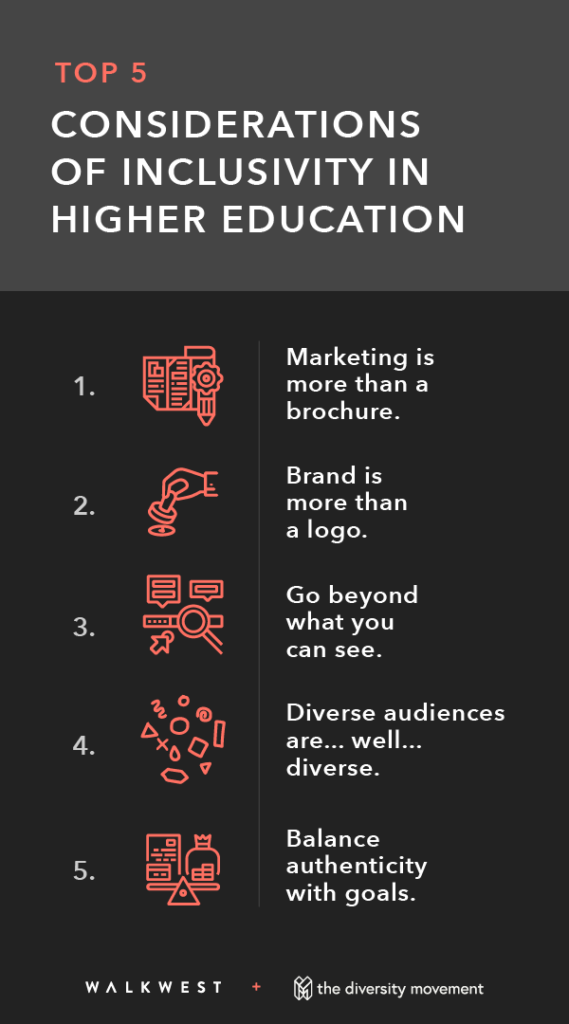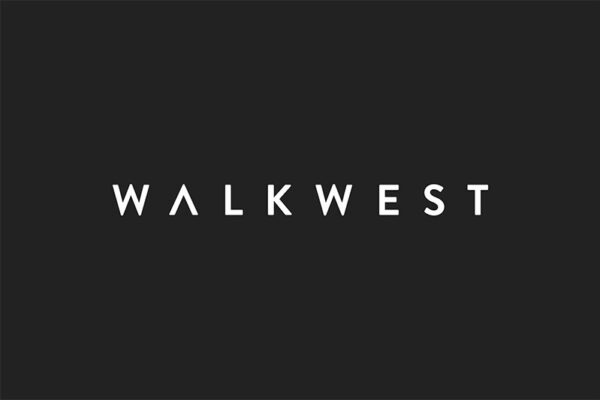The ways that we describe colleges and universities can often run counter to the imperative for a more inclusive marketing approach. For instance, can you be both selective and inclusive? How about elite and, simultaneously, equitable? If you are viewed as exclusive, can you also be diverse? This paradox of historical aspirations set against today’s social and cultural landscape is one of the biggest challenges facing higher ed marketers who are committed to inclusive marketing practices. And if higher education ever needed inclusive marketing, the time is now — in the wake of the COVID-19 pandemic and greater spotlights on mental health and social equity.
The Demographic Shift
It’s generally acknowledged that higher education is facing a severe demographic cliff, which the industry will cross in the next three years. In fact, today, many institutions are already feeling the heavy impact of fewer 18-24 year olds and less cultural importance placed on the necessity of gaining a university degree. The steady increase in young adults pursuing a college degree, which fueled a boom in university, college and community college enrollment over the past several decades, is waning.
Couple this demographic shift with more accessible, available, and affordable online learning, the economic challenges brought on by the pandemic, and changing attitudes about the value of higher education, and it’s clear that higher education needs to find ways to be more inclusive in order to expand its market reach and inspire a new generation of potential college students.
Translating Values to Impact
If you look at many of the value statements coming out of colleges and universities in 2021 you’ll see a trend towards embracing diversity, equity and inclusion–at least verbally. But conversations in a workshop presented by Shelley Willingham, vice president of business strategy at The Diversity Movement, at the recent American Marketing Association Symposium on Higher Education Marketing revealed that translating values into impact is not easy, even with great intentions.
Here are five of the top considerations and challenges we hear from marketers as they work to help their institutions live their values and adapt to changing demographic and cultural imperatives:

Marketing is More than a Brochure
Higher education marketing is too often viewed as a coalition of websites, ads, logos and brochures, so when administrators think of inclusive marketing, they sometimes think only about making campus images more visually diverse. Instead, administrators should look to their marketing departments and marketing partners for bigger insights on how to become more inclusive at the institutional level. How can marketers provide insights into all of the different types of potential students? What is a marketing team’s role in creating new and differentiated products and programs? Is your marketing arm actively engaged in enhancing the student experience and informing efforts to build a more inclusive culture?
Brand is More than a Logo
Efforts to address cultural barriers, enhance programs and reimagine the student experience should be matched by redesigned branding, including new visuals, language and brand narrative. Start by learning best practices for inclusive language. We also recommend that institutions pursue an inclusive brand audit, as well as training for their marketing and communications teams and leadership.
Go Beyond What You Can See
Every person represents and contains a dozen or more dimensions of diversity. First, of course, there is the external diversity that you can see (as this graphic shows), and the marketers we spoke with reported that sometimes that’s where the focus stops. Yet, higher education leaders must urgently expand their definitions of diversity and inclusion to include not just race, age, ability, and gender but also socioeconomic origin, neurodiversity, sexual orientation, religion, and more. Leaders who recognize that there’s more to diversity than what you can see when you look at someone can help their institutions become inclusive and remain relevant in the marketplace.
Diverse Audiences are… well… Diverse
Diverse populations are not homogenous, and no community is a monolith. There are different personae within each population group, and multiple, intersectional characteristics to consider. If your institution is serious about inclusive marketing, you will invest as much time into understanding the nuances of these diverse audiences as you have in your traditional markets and learn to adapt to what you find with an open mind.
Balance Authenticity with Goals
There is no one-size-fits-all approach for institutions. We hear many higher ed marketers struggling with authenticity in branding, as their current student population is not yet diverse. They do not want to misrepresent their current state but do want to attract more diverse students and staff. Similarly, some marketers say they are concerned about asking diverse students to participate in marketing materials because they do not want anyone to feel they are being singled out or used as a “token” representation. Our advice is to be straightforward with students, and invite them to have a voice in how the school improves its inclusive marketing. Certainly, you do not want to exploit your existing handful of racially-diverse students, but you do want them to feel invited to participate in marketing materials and in the conversation about how the school can attract more diverse students.
In sum, addressing the paradox of best-in-class, “exclusive” brand positioning and calls for more equitable, inclusive student cultures doesn’t mean scaling back aspirations for your university. It means scaling those aspirations more broadly, and in the process, doing what higher education is best at–creating bigger opportunities and unlocking greater potential for success.

